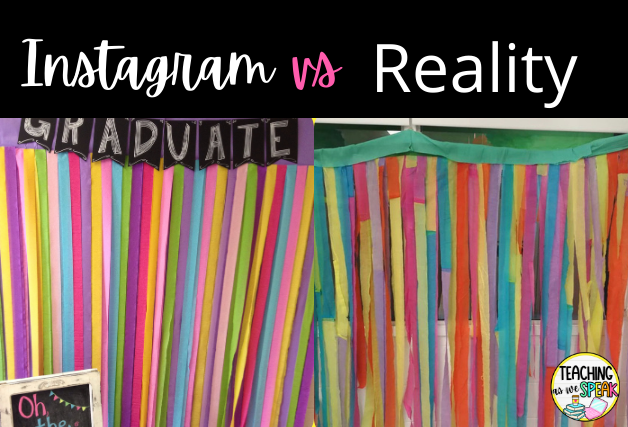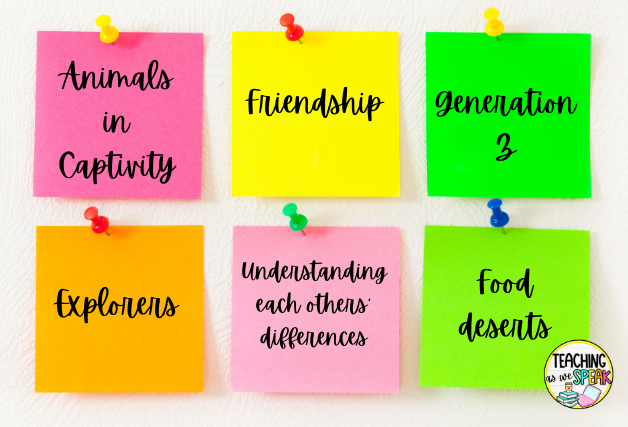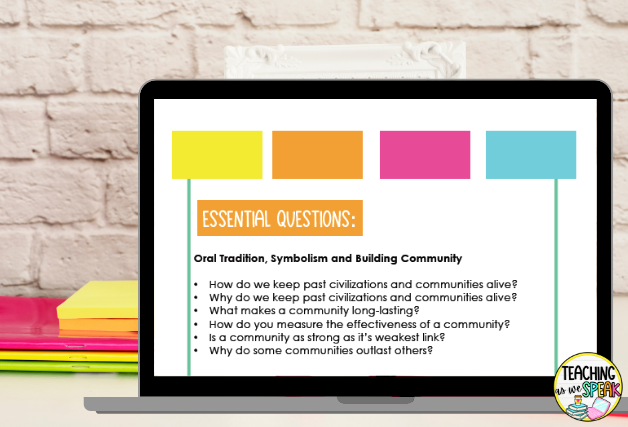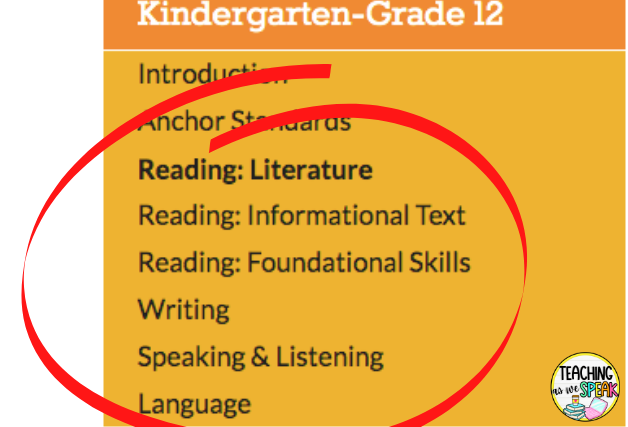Have you ever searched for terms on Google, such as “what is curriculum planning” into Google, only to b redirected by site after site?
You may find some tips from one site here, another one there., but you never get a clear answer. This ends up with you, sorta just winging the planning process, which leaves your plans feeling like something just isn’t right. Kind of like that time I tried to make a photo booth for my Kindergarteners graduation. (See photo below!) Can you say “Instagram vs Reality?”

When I first started as a teacher, I had no idea what curriculum planning was. If I’m being completely honest, I had no idea how to plan at all. Maybe I thought I did, but it would take me ages to do. My plans never worked out how I wanted them to. And when I would try to google how to plan a unit properly, I would never get a direct answer.
Also, when it would get to the end of the year, I realized I did not teach all the standards that I was required to. Oops!
All I knew was that I had ideas for unit topics, themes, but I didn’t know how to plan them so that they would flow, and that all of the units. I just wanted someone, anyone to say, here Jennifer, here are the exact steps to planning your teaching units for the year.
Now, having been a teacher since 2014, and with some experience under my belt, I set out to do exactly that for teachers. I want to help you understand the step-by-step process for curriculum mapping, or curriculum planning as it is sometimes referred to.
Today I’m going to go through the first 5 steps to nailing down your curriculum plan for the school year. I’m hoping this provides some clarity for you and will allow you to be more confident in your planning process. I also want you to have some fun with this! Planning can be fun if you allow yourself to truly tap into your imagination.
First, let me give you an overview of all 5 steps:
- Choosing a unit topic
- Selecting the essential questions
- Forming the goal for each unit
- Understanding the standards and dividing them
- Assessment types and purposes
SO let’s get started!
Before we jump into the steps, I want us to clear up a few things first. Now, when I refer to units in this video, I am referring to a series of concepts and learning goals that share a common topic or theme and that are taught over a span of 4-6 weeks. Usually, there are 6 teaching units in a school year. However, I suggest you check with your school to make sure this is accurate for your particular situation!
Want to know all of the steps to curriculum planning? I like your style! Click here to download my free “Roadmap to Curriculum Mapping Success”.
1. What is curriculum planning: Unit Titles!
Step one is choosing your unit titles for all 6 of your teaching units. The title is what the unit is going to be called. Make sure it is broad, rather than too specific.
I’m going to share some no-no’s when it comes to choosing unit titles and what to do instead.
- Do NOT have a title of the book as your unit title. If I see you walking down the street and ask you what your current unit title is, and you tell me “I’m doing a unit on Bridge to Terabithia” I’m going to give you a talking to.
I get it, as teachers, we love books. We get very passionate about the book picks we give to our students. It’s great to have books to include in your teaching units. You should! However, when you choose a book title as your unit title, it limits the learning to that specific book. For example, If I made my unit title: Bridge to Terabithia, everything I planned for the unit would have to revolve around that one text.
Instead, choose one major theme from your chosen novel. If we use the example of Bridge to Terabithia, the major theme in this novel is childhood friendships. Therefore my unit title could be “Childhood friendships”.
- Another common mistake is spending tons of time trying to come up with a cutesy title. I think social media culture is to blame for this one. We think everything we do in the classroom needs to be Instagram-worthy! Wrong. If it takes you ages to plan your unit titles because you want it to be punny enough to post on your classroom door in cute bubble letters, you’re doing it wrong.

Your unit titles don’t need to be cute. Sure, if you’re super creative and can think of one on the fly, go for it. But your unit titles should be clear and direct. Don’t spend hours on this.
Before you plan these unit titles, be sure to check with your school or district if you already have unit topics/themes that you are required to teach.
If you do not, you may be asking yourself, how do I choose topics if I have no ideas. I really urge you to get creative here. You could:
- Google unit topics for your grade. You get to decide what world you and your students get to dive into.
- Pick up on popular topics your students are interested
- Trends you see in pop culture
- A memorable unit you remember from your childhood
After you have brainstormed some ideas, I want you to cement these 6 unit topics on a large piece of paper or a poster with post-it notes.
Congrats! You have taken the first step towards curriculum mapping your year!
2. What is Curriculum Planning-Essential Questions
Now that you have your unit topics chosen, it’s time to select your essential questions for each unit. Picture yourself on a rowboat, just off the shore of a beautiful beach. Now picture yourself grabbing binoculars, and you zero in on a palm tree. I want you to think of your unit topic as the beach and that palm tree as the essential questions. Simply put, essentials questions give you the direction of your unit and of your students’ learning.
Questions should be:
- Open-ended(You could create essential questions that are yes or no, but it needs to be discussed with students that they will need to have an
- Begin with how, why
- Related to the topic
- Something the students will be able to answer
Click here to get my Bank of Essential Questions, which includes over 150 essential questions!

Now that you know what the second step is, decide on an essential question for each of the topics you chose in step one.
Click here to download the free “Roadmap to Curriculum Mapping Success.”
3.What is the curriculum planning-The goal?
When it comes to planning, you want to have the end in mind…all of the time! Have you heard of “backward design”? It’s this exact idea of envisioning what the end of the unit will look like before you have even started it with your students.
You are basically asking yourself, “what do I want students to learn, understand and accomplish by the end of these 4-6 weeks?”.
Use this outline to frame your goals for each unit.
Students will understand that ________________.

4. Understanding the standards and dividing them
Now that you have created “the juice” for all of your units (the topics, the essential questions, and the goal), you can begin the process of understanding and dividing the teaching standards you are required to teach.
In ELA, there are 6 categories of learning:
- Reading-Literature
- Reading-Informational Text
- Reading-Foundational Skills
- Writing
- Speaking and Listening
- Language

Within each, there are approximately 10 standards. These are numbered and each has a special code. For example, the first standard in Reading-Literature for Grade 4 has the code CCSS.ELA-LITERACY.RL.4.1.
Many of these standards of sub-standards (these will have a letter at the end).
You need to spend some time going through these standards. After all, these are going to let you know what you will be evaluating your students on.
Now, when it comes to deciding which standards you will teach and when, here are some tips:
- You do NOT need to teach all standards in every unit!
- Try not to teach the same standards together all the time
- It’s ok to repeat standards in different units
- Only select standards for a unit that you will be assessing and that will be heavily used. Don’t choose a standard for a lesson if it’s only vaguely used in a lesson.
You can get more tips by downloading the free “Roadmap to Curriculum Mapping Success”.
Start diving these standards into each unit. Think of this step as a fun puzzle.
5. Assessment Types and the reason for assessing
Ok, now you should have the standards you will be assessed in each unit. Now we need to understand more about the different types of assessments and why we use them.
There are 4 types of assessments:
- Recall (think of tests and quizzes)
- Product (Students create something)
- Demo (Students do/perform something)
- Process (Can also be a product or demo, but students are also reflecting on the process, answering questions such as “what went well?” and “what would you do differently next time?”)
When deciding which assessment types to use in your units, you must also think about why you are assessing (and no, “I need marks” is not an acceptable reason!)
There are 3 reasons why we assess students:
- Diagnostic
- Formative
- Summative

We use diagnostic assessments when we want to see where the students are at before we teach them something new. Checking for prior knowledge is the goal when we do a diagnostic assessment. Think of things like a cold task, where we tell students to do something like writing a story, without you teaching them how to do it.
Formative assessments are what we do thorughout the unit. We are checking to see if they are grasping what we are teaching, as we teach it. This can be informal, such as an observation or discussion, or something more formal like an exit ticket.
Finally, summative assessments are what we use to assess students at the end of the learning journey. A test or quiz is what we often think of when we think of this type of assessment. However, a test isn’t the only form of summative assessment. Final projects and presentations are some other examples.
Want to know the other 4 steps?
Be sure to download my free “Roadmap to Curriculum Mapping Success”. You can download it by clicking here!
You may also be interested in these blog posts:
- HOW TO PREPARE FOR A NEW SCHOOL YEAR-THE VERY FIRST 3 THINGS TO DO
- 3 COMMON MISTAKES TEACHERS MAKE IN THE CLASSROOM
- SCHOOL IS ALMOST OVER! DO THESE 3 THINGS BEFORE STARTING YOUR SUMMER!
What did you think of this blog post? Which step seems the most challenging? Comment down below! I’d love to hear from you!




